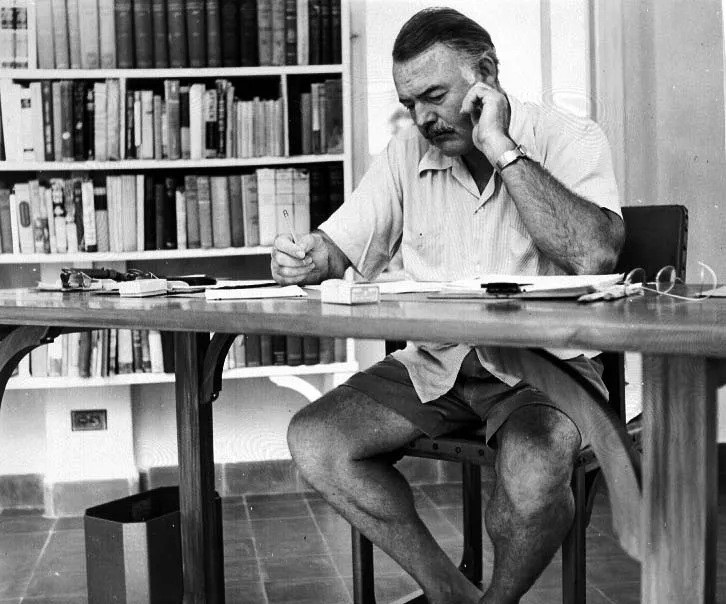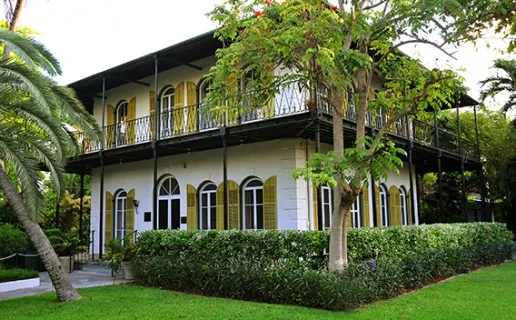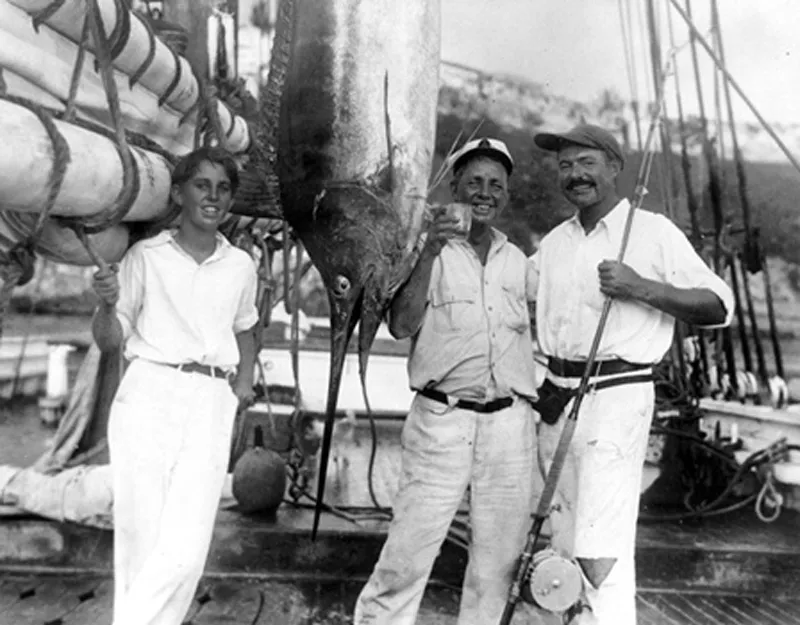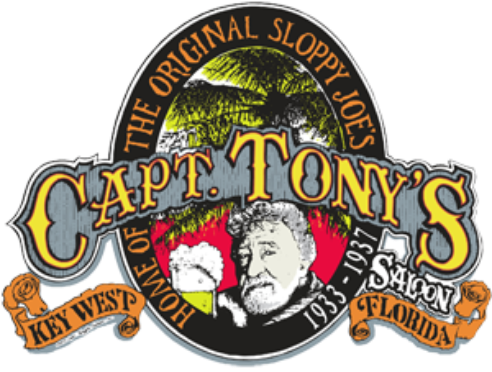HEMINGWAY AND TONY’S

The Whole Truth About Hemingway and Sloppy Joe’s Bar
Key West history is filled with colorful personalities, among them the famous Ernest Hemingway. Across the island there are countless references to him and the period in his life spent in Key West. His home is open for tours and several bars promote that “Hemingway drank here and one boasts, “Hemingway’s favorite bar.” While true enough, the whole truth about Ernest Hemingway’s watering holes is that his favorite bar, owned by his good friend, Josie Russell was “Sloppy Joe’s” … not the one on Duval Street; the original Sloppy Joes at 428 Greene Street which is now Captain Tony’s Saloon.
Most of Hemingway’s productive years as an author took place in Key West during this time (1928-1938). It was during this period that he wrote “Death in the Afternoon”, “The Green Hills of Africa “, “To Have and Have Not” as well as “The Short, Happy Life of Francis Macomber.” Hemingway kept to a strict schedule while writing in Key West, waking at dawn and walking to his pool house, where he wrote at an old wooden desk. After work he met his circle of friends every afternoon at 3:30 – at Sloppy Joe’s Bar, 428 Greene St. (Captain Tony’s Saloon).

Ernest Hemingway and his second wife, Pauline, came to Key West from Paris in 1928 on the advice of John Dos Passos, a novelist. Though he traveled to Africa, Wyoming and Spain , he lived in Key West for 12 years, much of the time fishing and drinking. The macho myth, called “Papa Hemingway” was created while living in Key West and he found Key West to be the perfect location for writing. Hemingway’s boat captain and favorite bar owner, Josie Russell cashed a $1,000 royalty check for Hemingway when a bank refused and they became close friends. Russell and Ernest Hemingway would leave Key West for extended fishing trips to Havana. Josie charged Hemingway $10 a day charter fee for the Anita.
On one of these trips Hemingway met a Cuban fisherman, Carlos Gutierrez, who was an excellent Marlin fisherman and they hired him on as a mate. He had been catching marlin for nearly 40 years and was, to Hemingway, an excellent storyteller. He was the prototype for Santiago in The Old Man and the Sea.
Russell is himself, immortalized as “Freddie”, the captain of the Queen Conch and the owner of Freddy’s Bar in Hemingway’s book “To Have and Have Not”. Some other locals at 428 Greene St. were also inspiration to Hemingway and like Joe Russell, are forever immortalized in his writings. Charles Thompson who ran a local hardware business was Karl in Green Hills of Africa. He took Hemingway on his first fishing trip off the Florida Key’s. Eddie “Bra” Saunders, a charter boat captain, ran a local charter boat business and took both Hemingway and Charles Thompson on their first trip into the Gulf Stream, 30 miles off the coast. He also gave Hemingway the story for “After the Storm”, his own life story George Brooks, a local lawyer and politician, was characterized as Bee-Lips in “To Have and Have Not.”
Hemingway’s drink of choice was Teacher’s (a cheap scotch) and soda. But on occasion, Skinner, the 300 pound black bartender, would enjoy preparing a special rum concoction called a Papa Dobles for Hemingway, though Hemingway preferred the scotch and soda. Hemingway loved the bar and he loved the urinal in the men’s room, a trough. He always told his buddies that if anything ever happened to the place – he wanted the urinal and when Joe Russell and his patrons moved the bar to 201 Duval Street, it’s current location, the urinal ended up at Hemingway’s house on Whitehead Street.

The End of ‘The Best Ten Years of His Life’ (1928-1938)
In December 1936, Hemingway met a writer named Martha Gelhorn at Sloppy Joe’s Bar, 428 Greene Street (Captain Tony’s Saloon) when she paid Skinner, the 300 lb. black bartender $20 to introduce her to Hemingway.
They sat in Sloppy Joe’s drinking Papa Dobles. They met again a year later in Spain when both were covering the Spanish Civil War. They shared an affection for the loyalists, and their relationship grew and finally, Martha Gelhorn became his third wife. As a result of his romance and subsequent marriage to Martha, his Key West friends, who were good friends with Pauline Pfeiffer, his second wife, cooled towards Hemingway.
Shortly thereafter, in mid 1938 Hemingway left Key West and moved to Cuba with Martha. Although there were several sporadic brief visits after this, for all purposes, his days in Key West were over.
The legend of course, lives on but as many in Key West would have you believe Hemingway’s Sloppy Joe’s wasn’t the bar at the corner of Greene and Duval Streets, Hemingway’s Sloppy Joes was located at 428 Greene Street; today’s famous “Captain Tony’s Saloon.”




